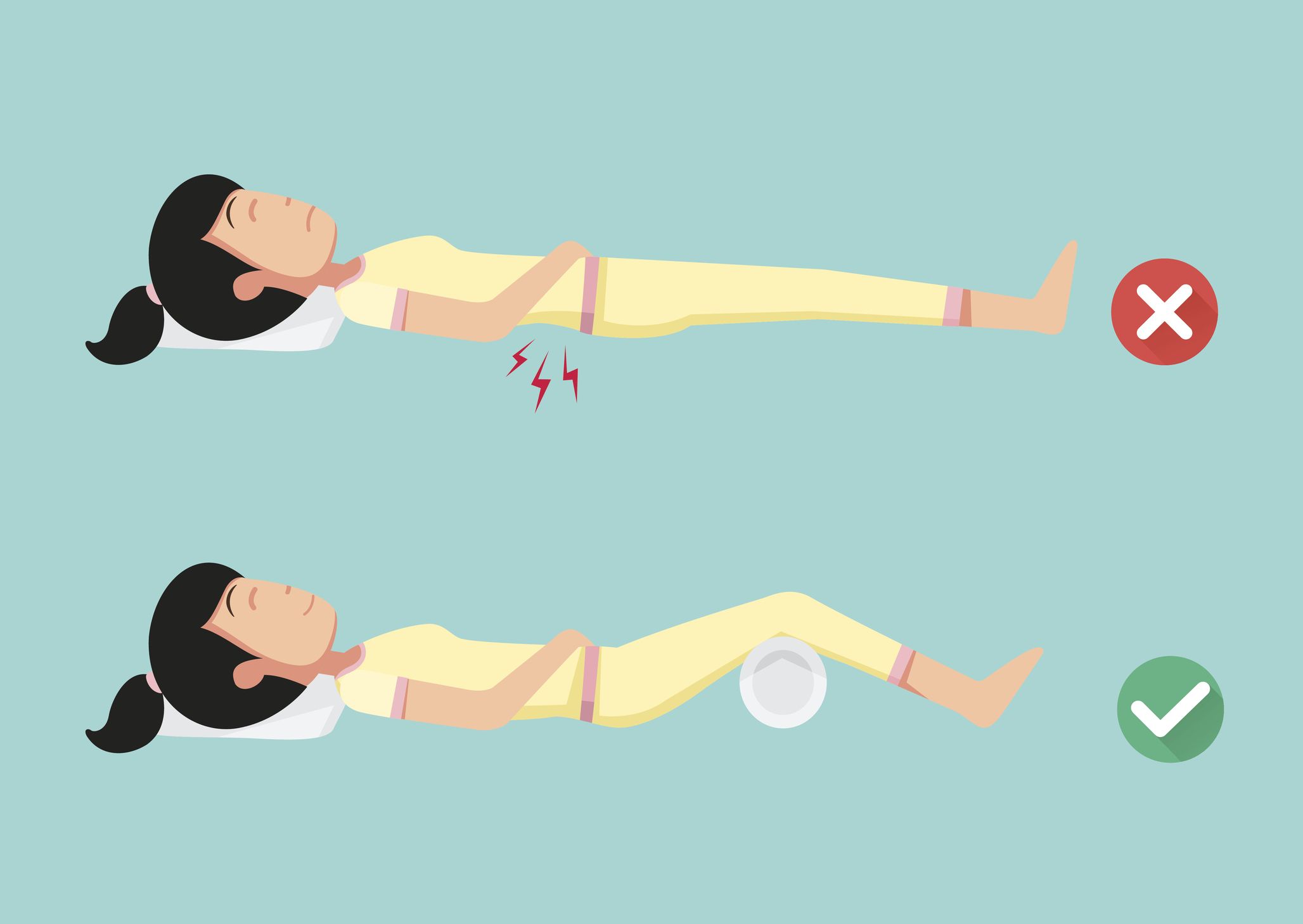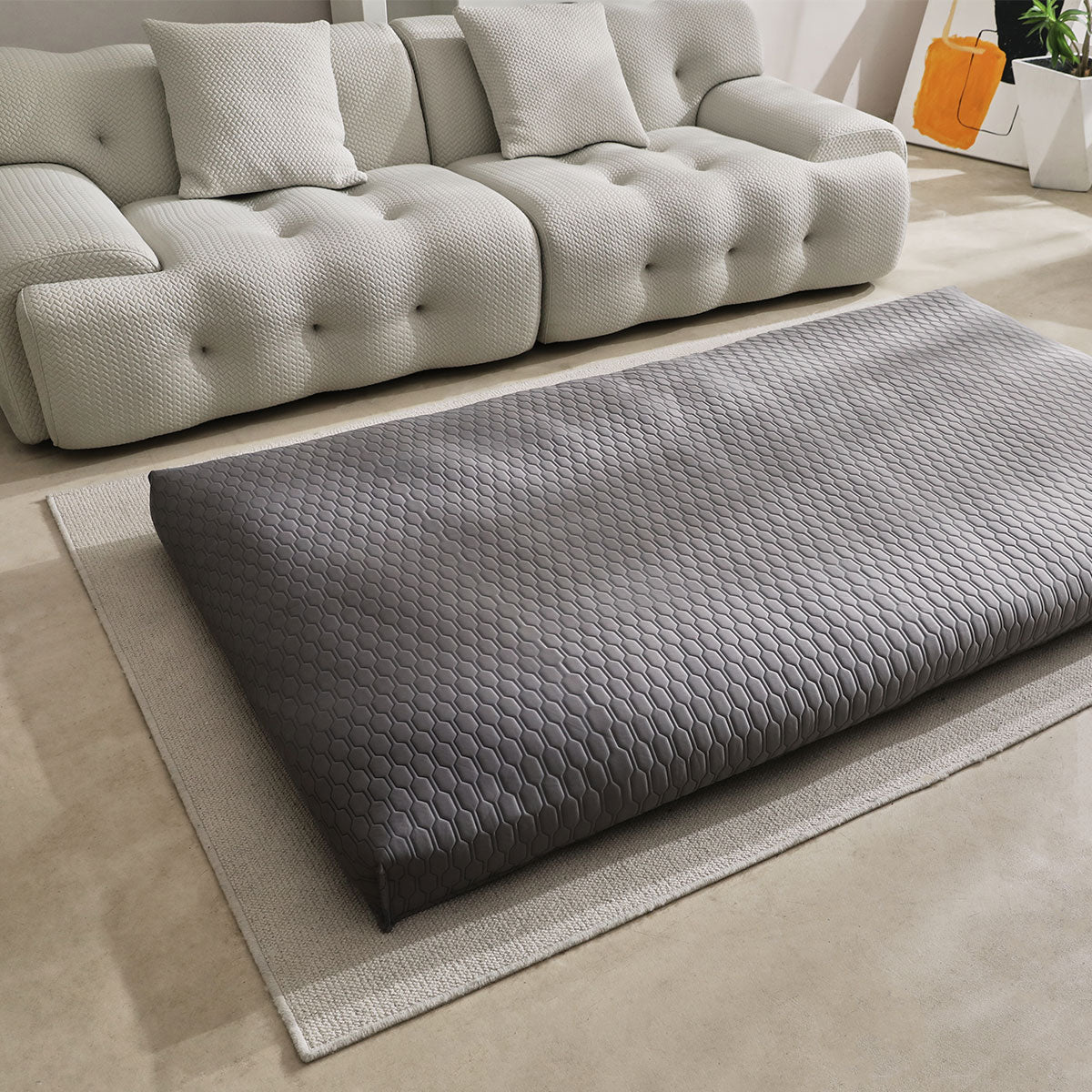Lower back pain is a common and sometimes debilitating condition that can make it difficult to get a good night's sleep. It is estimated that up to 80% of adults experience lower back pain at some point in their lives. It is one of the most common reasons for people to visit a doctor or miss work. The relationship between sleep and lower back pain is complex, as pain can disrupt sleep and poor sleep can make it more likely that a person will experience pain. To ensure quality sleep and reduce lower back pain, it is important to understand the links between sleep and lower back pain, and to find the best solution to provide your lower back support and comfort.

How are sleep and lower back pain related?
The lower back is responsible for supporting the body and protecting the spinal cord. It is also responsible for bearing the majority of the body's weight and providing flexibility and movement of the torso. However, many injuries, conditions and diseases can cause lower back pain. Dealing with back pain can be a major challenge, especially at night. Trying to get comfortable in bed and finding the right sleeping position can be difficult when you're experiencing back pain, which can lead to sleepless nights or even a sleep disorder. Additionally, certain medications prescribed for back pain can further disrupt your sleep.
On the contrary, poor quality sleep is a major contributor to lower back pain. Poor sleep can lead to increased muscle tension, which can cause lower back pain, as well as decreased circulation, resulting in pain and discomfort in the back. Furthermore, sleeping in a poor position can also cause increased strain on the lower back muscles, leading to pain and discomfort in the morning. This can include sleeping on your stomach, sleeping in a fetal position, or sleeping with your legs crossed, which are all poor positions for the spine and can result in misalignment and pain.
 *prevention
*prevention
How to sleep with lower back pain?
Lower back pain usually gets better with rest, ice and over-the-counter pain relievers. Sleeping with lower back pain can be challenging, but there are several steps you can take to make it more bearable.
Maintain a good sleeping posture
Sleeping on your side- Sleeping in a different position can help relieve strain on the back. If you sleep on your side, bring your legs up slightly and place a pillow between them. You can also use a full-length body pillow for added comfort.
Sleeping on your back- If you choose to sleep on your back, it is important to maintain the natural curve of your lower back by using a pillow beneath your knees. You can also place a rolled towel under the small of your back for additional support. Additionally, be sure to provide adequate support for your neck with a pillow.
Sleeping on your stomach- Sleeping on your stomach can put a lot of strain on your lower back, so it is recommended to sleep in a different position. However, if you cannot sleep any other way, you can reduce the strain by placing a pillow under your pelvis and lower abdomen. You can also use a pillow under your head, but if it causes too much strain on your back then you should try sleeping without one.
Stretch before bed
Stretching can be helpful to relieve lower back pain. Staying active increases blood flow to the area and helps you heal. Gentle stretching can help to relieve tension and reduce muscle tightness that may be causing your pain.
Be sure to consult your doctor before starting any stretching routine, and they can help you determine which stretches are best for your particular condition. Doing so is especially important if you have a health condition or recent injury. When your provider gives you the OK, you can slowly add these stretches for low back pain to your routine.
When stretching, only go as far as is comfortable and you don't feel any pain. You may feel a pulling sensation or some mild discomfort, but stop immediately if you feel any sharp pain or your back pain symptoms, such as pain or numbness down your leg, worsen.
Choose a right Pillow & Mattress
Having the right pillow and mattress can be an important factor in reducing or preventing lower back pain. An ideal mattress should provide comfortable support and help keep the spine in alignment. This allows muscles to relax, preventing strain, and allowing the structures of the spine to rest properly during the night. Additionally, it's important to find pillow & mattress that meets one's individual preferences for comfort. When combined, these two factors can help reduce or prevent lower back pain.

Lumbar Support Pillow- Using a lumbar support pillow when resting can provide extra support for your spine and ensure proper alignment. The backrest pillow in the form of a wedge or contoured shape can help promote better posture while keeping you comfortable. Additionally, side sleepers may benefit from these pillows as they provide support between the knees which can help reduce hip pain and improve overall body alignment.
Memory Foam Pillow- Memory foam is an ideal choice for people who are seeking relief from lower back pain while sleeping. Not only does it provide a sturdy and moldable support that keeps the neck and head aligned with the torso, but it also offers breathable and cooling layers of foam for maximum comfort. Side and back sleepers can benefit greatly from this type of pillow, as it helps to keep the neck and head at the correct height and keeps them in line with the rest of the body.
Down Pillows-Despite not offering the same firmness as a memory foam pillow, down pillows still provide plenty of fluffy comfort. Down pillows provide a customizable level of support for those who sleep on their back or stomach. For back sleepers, a down pillow can be placed under their pelvis for lumbar support, while stomach sleepers can use thinner, low-loft pillows to keep the neck properly aligned.

Use a right mattress
If pillows are only providing temporary relief, it may be time to consider replacing your mattress. An old mattress that has lost its support can be damaging for your spine.
Foam Mattress- Stomach sleepers require a mattress that is medium-firm to firm to avoid creating misalignment and pain in their lower back and neck areas. There is a variety of foam types available on the market, such as memory foam, poly foam, and latex foam, so there isn't one particular type that is best for stomach sleepers. Ultimately, the foam type should be chosen based on the feel you're looking for.
Hybrid Mattress- If you're a side sleeper looking for a mattress that provides pressure relief and responsive support, a hybrid mattress might be the perfect choice for you. Hybrid mattresses feature a combination of innerspring coils and foam layers for a balance of cushion and support. This helps keep your spine, hips, and shoulders in a neutral position, promoting a comfortable and restful night's sleep.
Floor mattress - Back sleepers need a mattress that is medium-firm to firm in order to provide the right amount of support for their lower back. This will help to prevent their hips from sinking too far in and creating pressure points. A floor mattress may be a great option for these sleeper. Sleeping on the floor mattress allows your spine to be in the most neutral position because, without thick additional cushioning, the body can adapt and distribute pressure all around the mattress surface area. This can help minimize back and neck pain.
Conclusion
Lower back pain can be a major hindrance to getting a good night's rest. Taking the right precautions to reduce pain prior to sleep, such as stretching and using a supportive pillow, can be beneficial and make the difference between a night of tossing and turning and a restful sleep. Additionally, you should consult with a medical professional if your back pain is severe or persists for an extended period of time. With the right precautions and treatments, you can enjoy a comfortable and restful sleep even with lower back pain.

